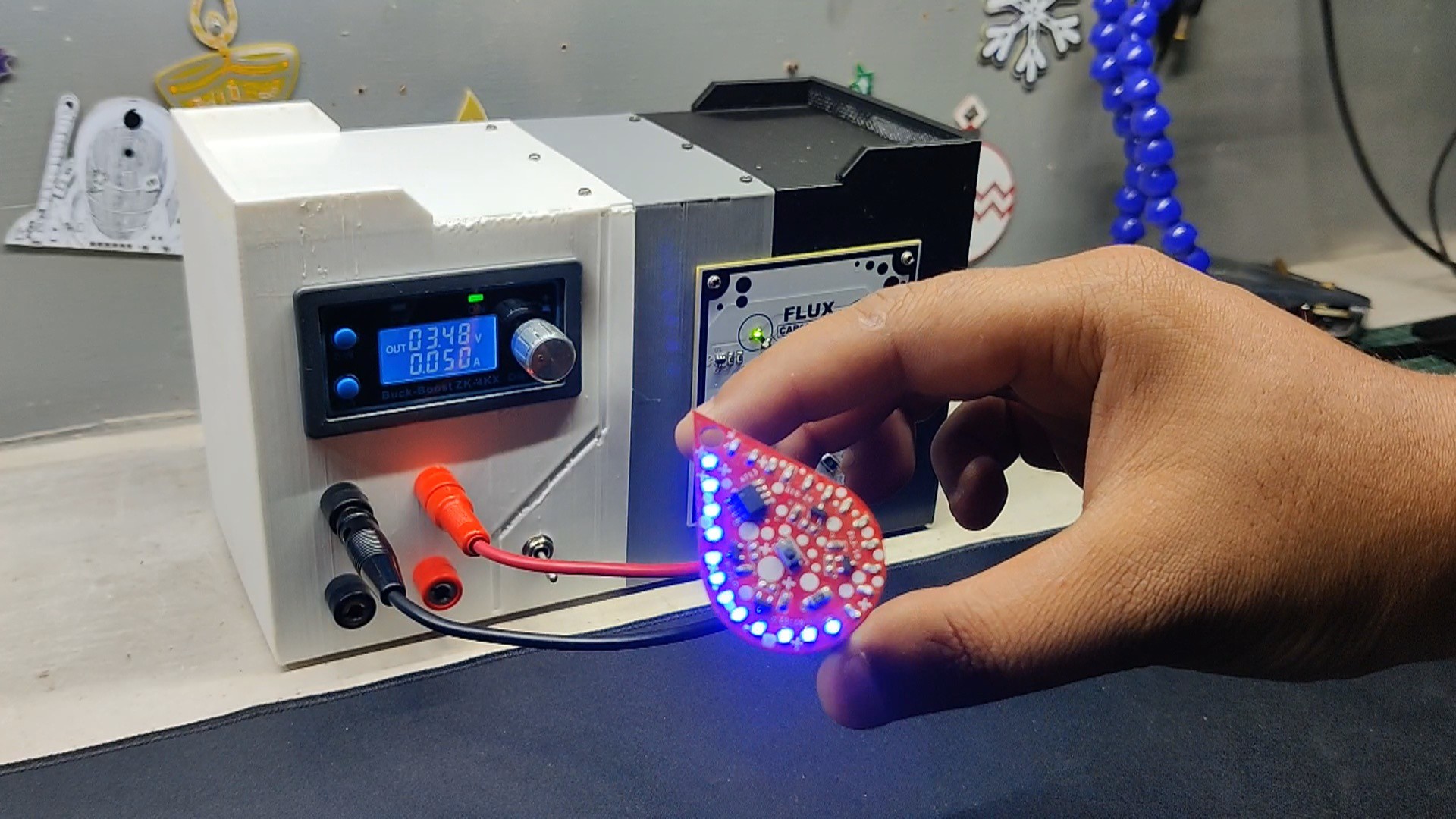
Here, we are using the ZK-4KX DC-DC Buck Boost converter module, an adjustable regulated power supply module with a voltage range of 0.5–30V and 4A. It can be used for a number of power-related applications, such as solar battery charging, as a boost converter to drive high-power LEDs, or even to create a bench power supply.
The ZK-4X is solely a module that requires 0 to 30V to provide us with regulated or boosted voltage and current; therefore, we needed to add a power supply, which we were able to recover from the Ender 3 3D printer. This power supply was a 24V, 10A SMPS.
We created a PCB with a Flux Capacitor design to add some visual elements to our project. It has a few SMD LEDs that continuously display an animation like a flux capacitor. The Attiny85 microcontroller drives all of the LEDs, and the SMPS 24V power supply powers this PCB.
We added a Power INLET box with fuse holder, along with a few banana pin connectors and other stuff, which are all clearly explained in this article, so let's get started with the build.
ZK-4KX DC-DC Buck Boost Module
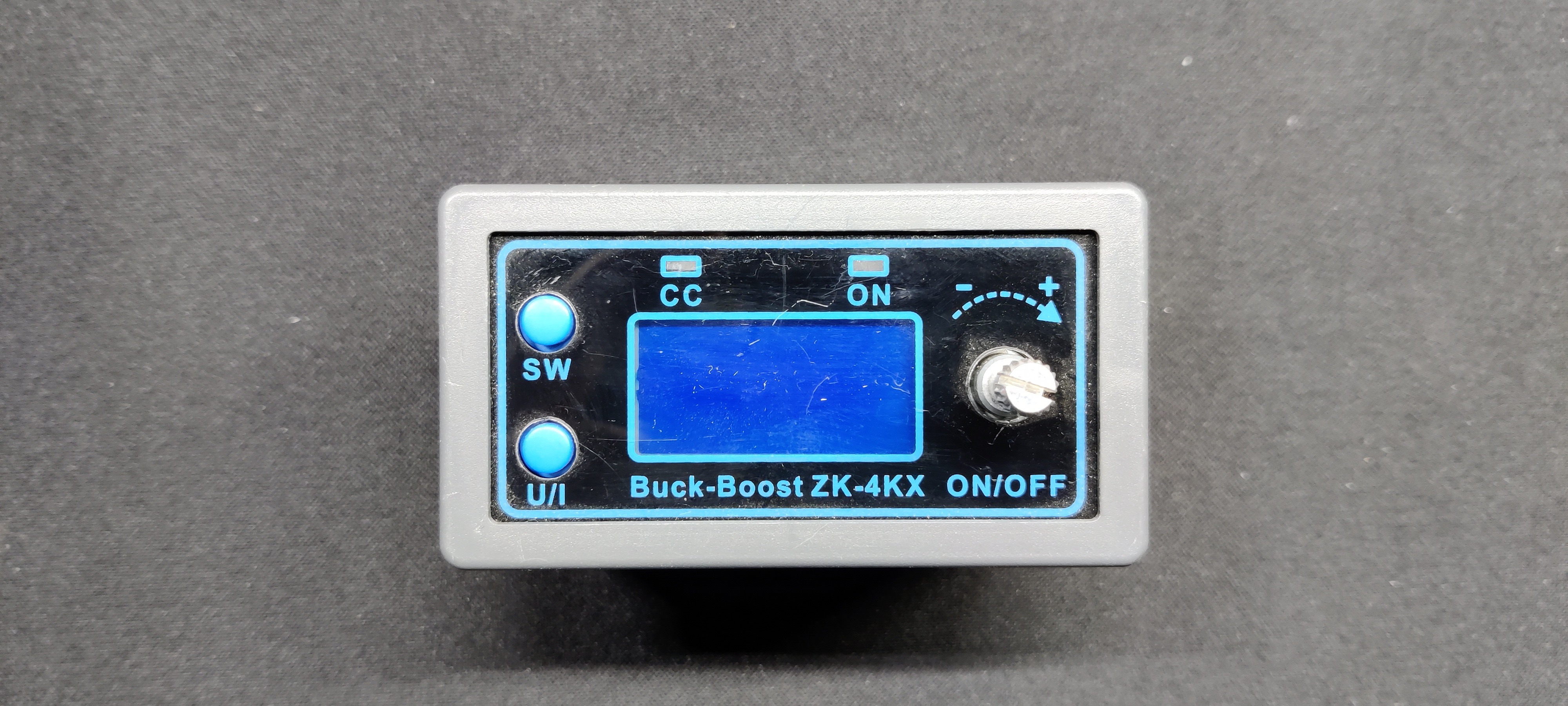
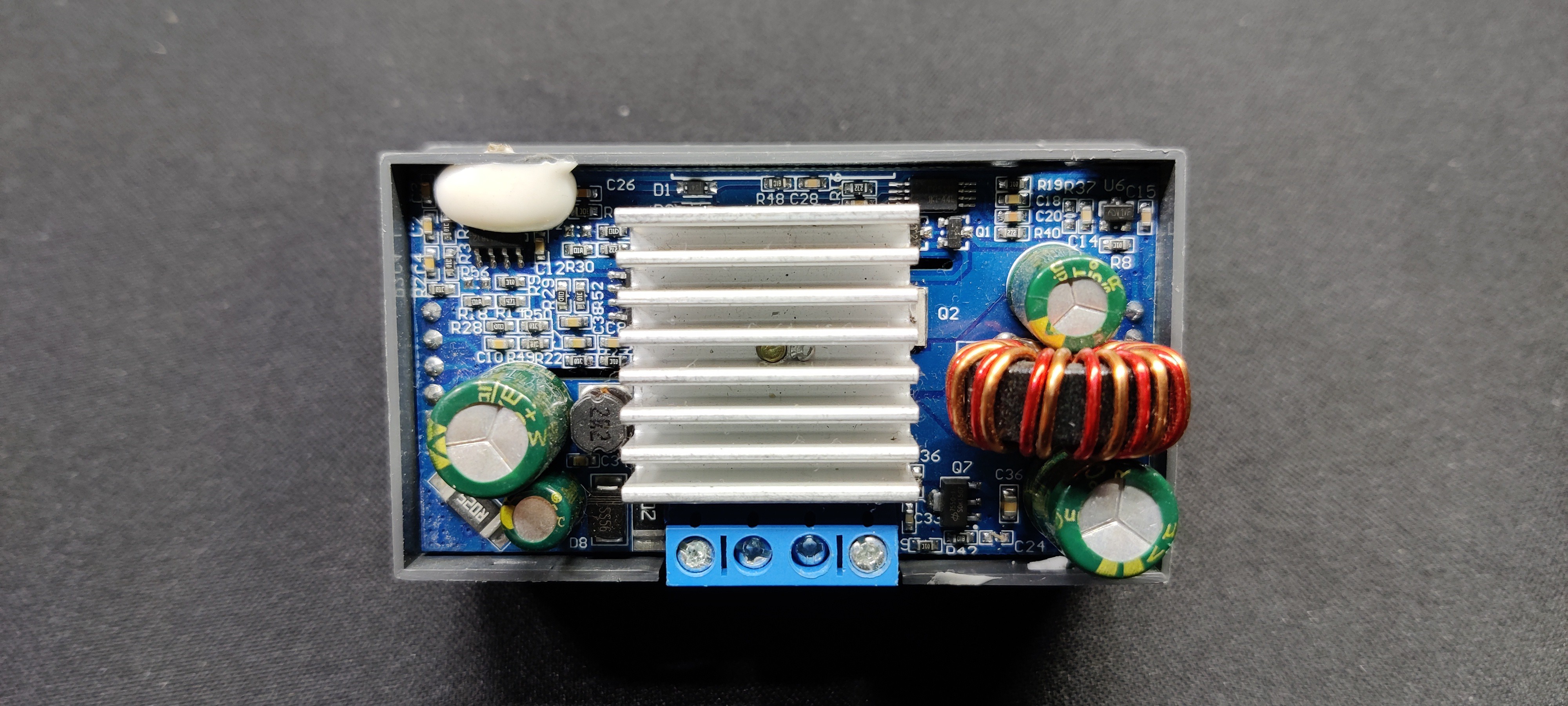
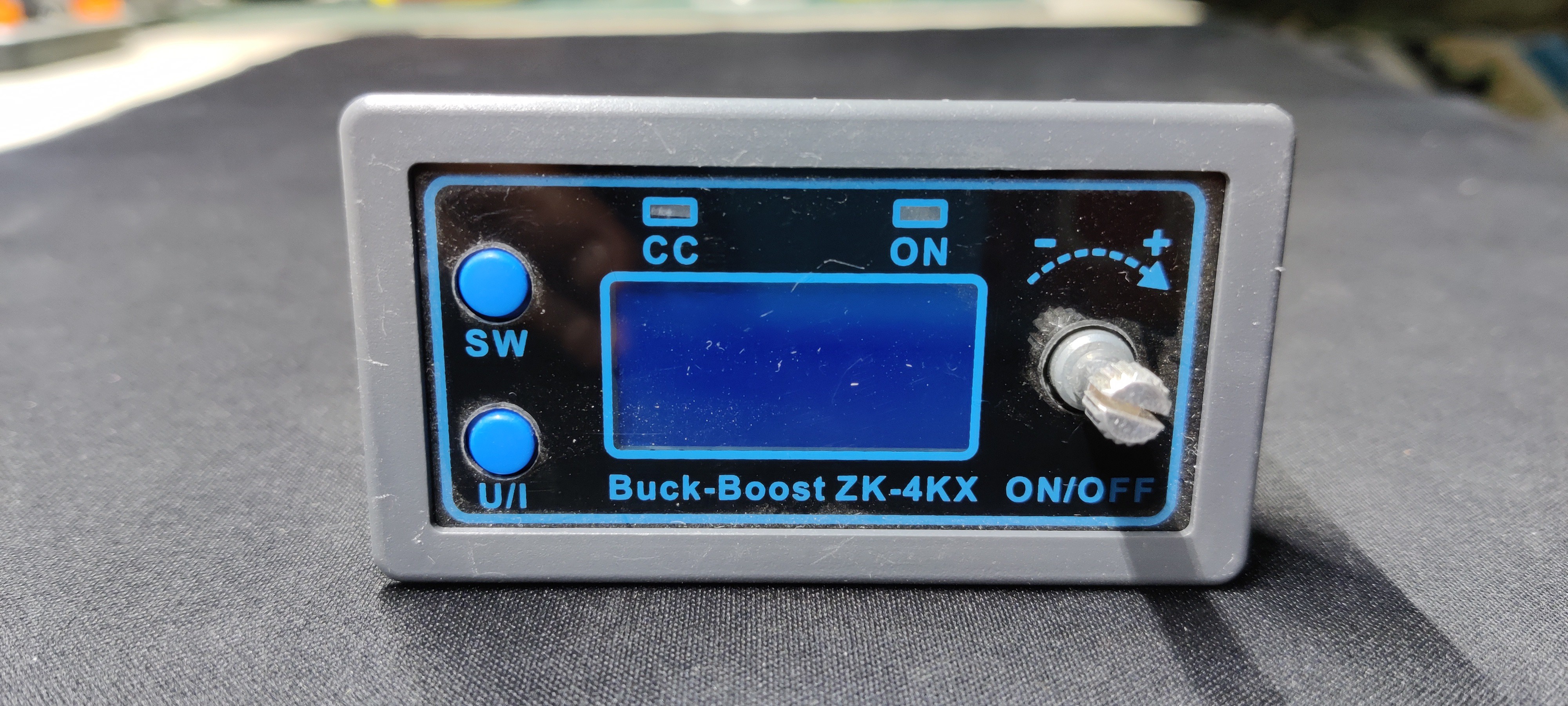
The heart of this project is the ZK-4KX DC DC Buck Boost Converter, which is a 0.5–30V 4A Power Module Adjustable Regulated Power Supply featuring an LCD that can display input/output voltage, output current, output power, output capacity/output time, along with many key features like a good conversion efficiency of 88%, stable 3A output current, input and output reverse protection, and more.
Here's its full manual, which you can checkout for more details.
https://manuals.plus/parts-express/zk-4kx-cnc-dc-dc-buck-boost-converter-manual
SPECIFICATIONS-
- Input voltage: 5.0–30 volts
- Output voltage: 0.5–30 volts
- Output current: can work stably at 3A for a long time, and can reach 4A under enhanced heat dissipation
- Output power: natural heat dissipation, 35W; strengthened heat dissipation, 50W
- Voltage display resolution: 0.01V
- Current display resolution: 0.001A
- Conversion efficiency: about 88>#/li###
- Soft start: yes (with high power, the load module may fail when starting)
- Protection mechanism:
- Input anti-reverse connection
- Output: anti-reverse irrigation
- Input under voltage protection (4.8–30 V adjustable, default 4.8 V)
- Output overvoltage protection (0.5–31 V adjustable, default 31V)
- Output overcurrent protection 0-4.1a (adjustable, default 4.1A)
- Overpower protection (0-50w adjustable, default 50W)
- Overtemperature protection (80-110°C adjustable, default 110℃)
- Timeout protection (0–100 h adjustable, off by default)
- Super capacity protection (0–60 ah adjustable, off by default)
- Operating frequency: 180 kHz
How to use:
The device operates by providing power to its input terminals; however, in order to turn on the output terminal, we must tap the rotary encoder button.
The output terminal's voltage can be set by using the rotary encoder.
The SET button has two main functions that are as follows: when pressed once, it indicates the amount of Ah utilized, and when pressed twice, it shows the amount of A that the load has used. The third tap changes it back to mA consumed by the load, and the fourth tap displays the W consumed by the load.
The U/I button is used for setting voltage and constant current. It can be seen that a certain digit of the output voltage value is flashing. Rotate the encoder left and right to adjust the major and minor.Short-press the rotary encoder to choose which bit of output voltage to set. After setting, press the U/I button 2 times to return to the normal interface. Or automatically return to the normal interface after stopping operation for 10 seconds.
Power Supply
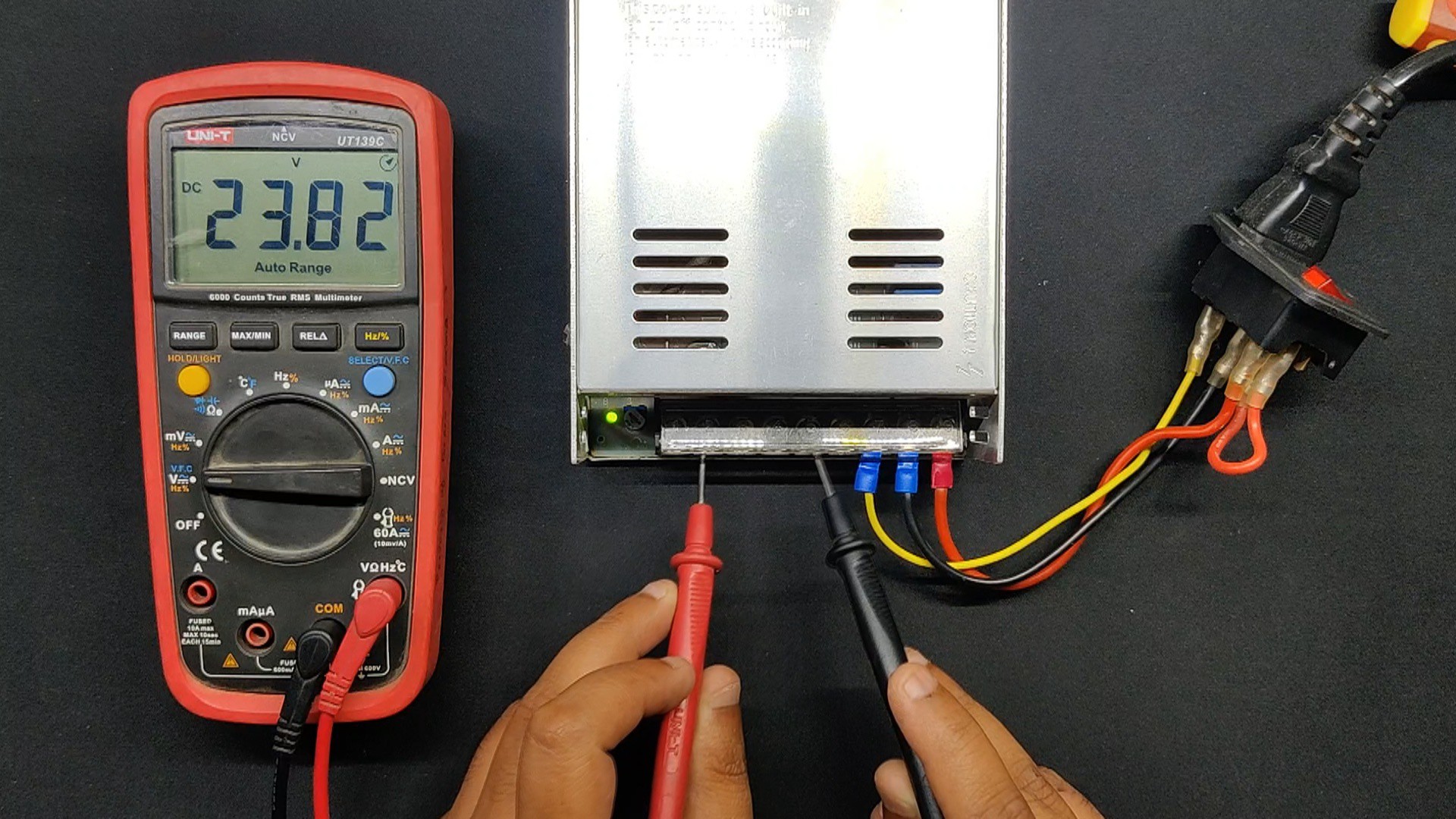
We are using an old 3D printer's 24V/10A power supply, which powers 24V servo motors, as our power source. Given that the ZK-4KX Module only allows voltage up to 30V, a 24V PSU was ideal for this situation.
More specifically, this supply was manufactured by Chengliang; it is a 360W 24V PSU with a maximum output current of 15A, but I was only able to extract a maximum of 10A at 24V from it. However, it works flawlessly as a PSU for our project.
It even has an integrated fan to cool the PSU's internal components.
In addition to the PSU, we also removed the power inlet from the ender 3, which we would utilize as the PSU's inlet for the bench power supply project.
DESIGN
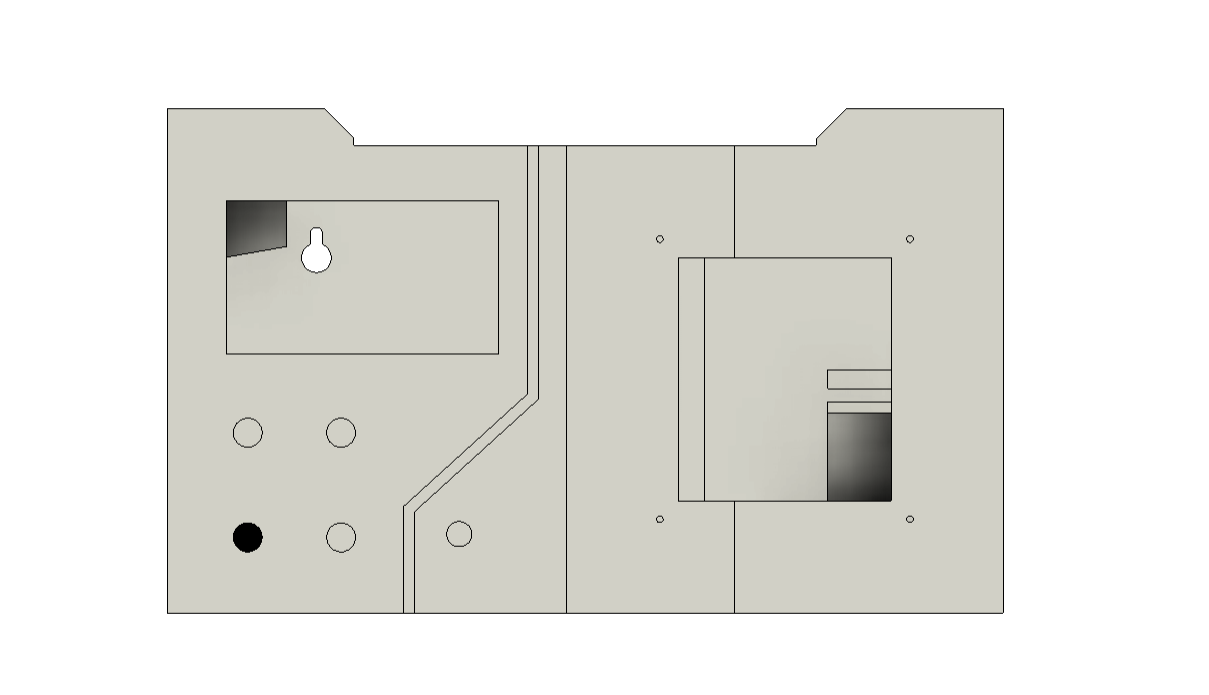
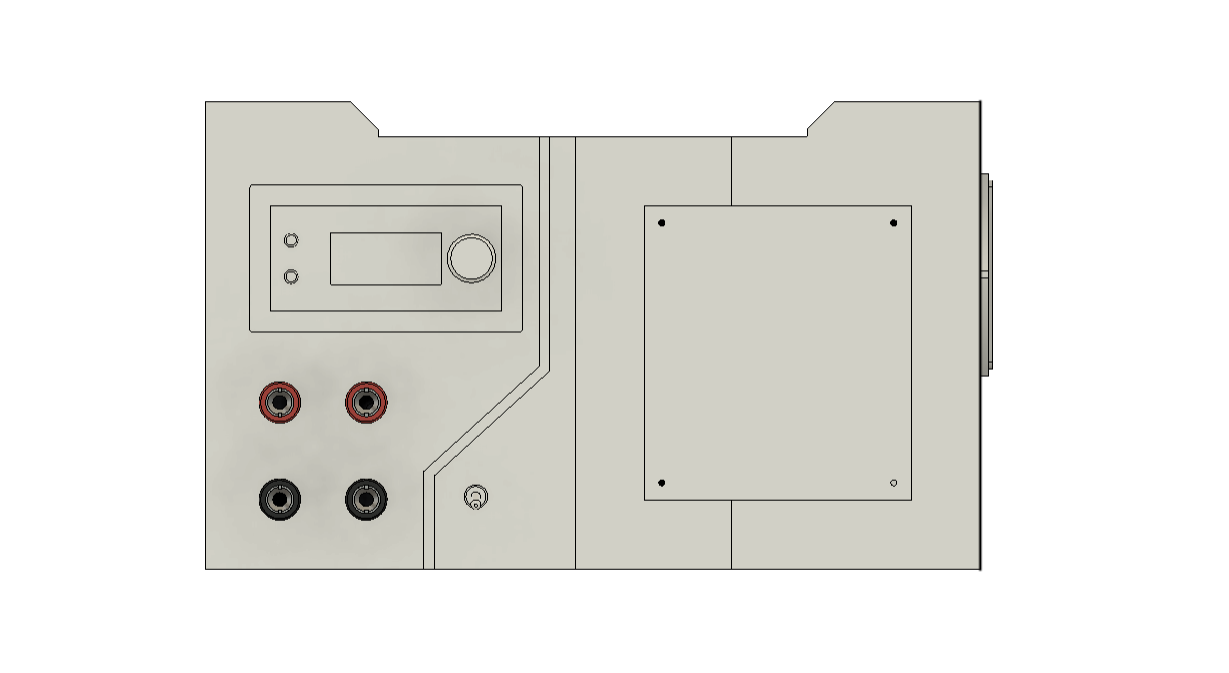
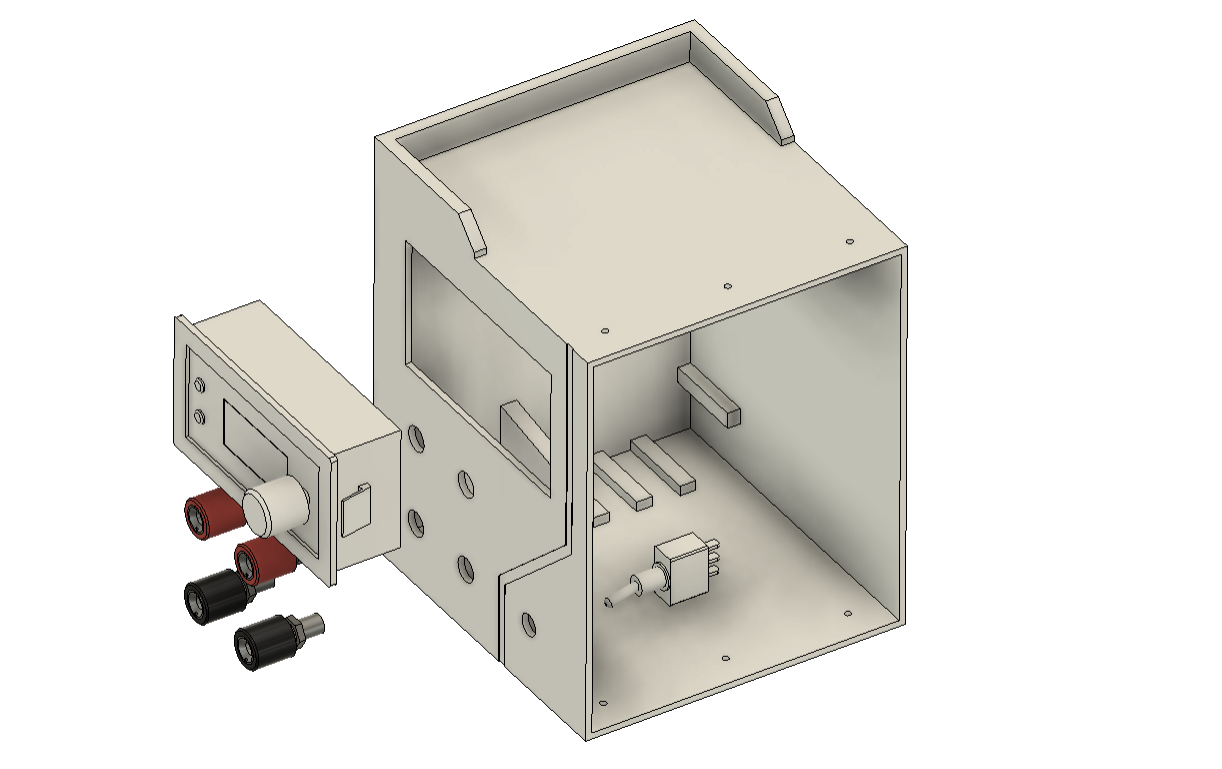
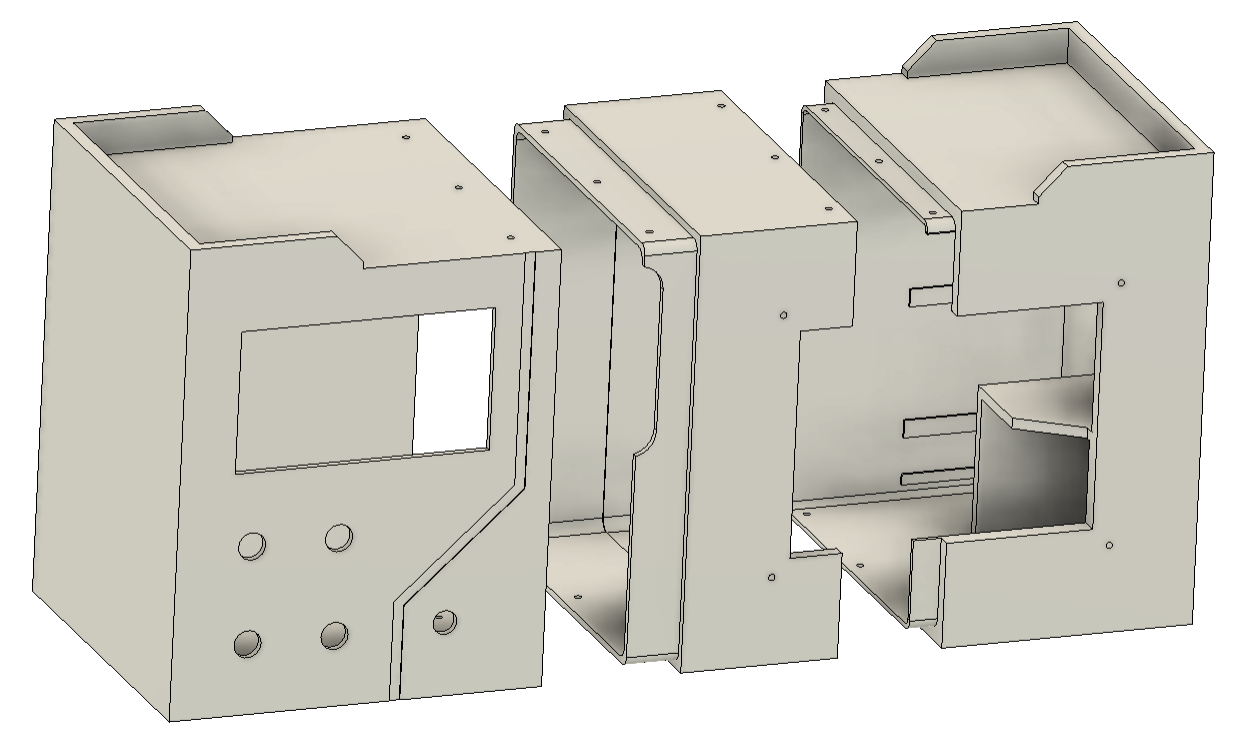
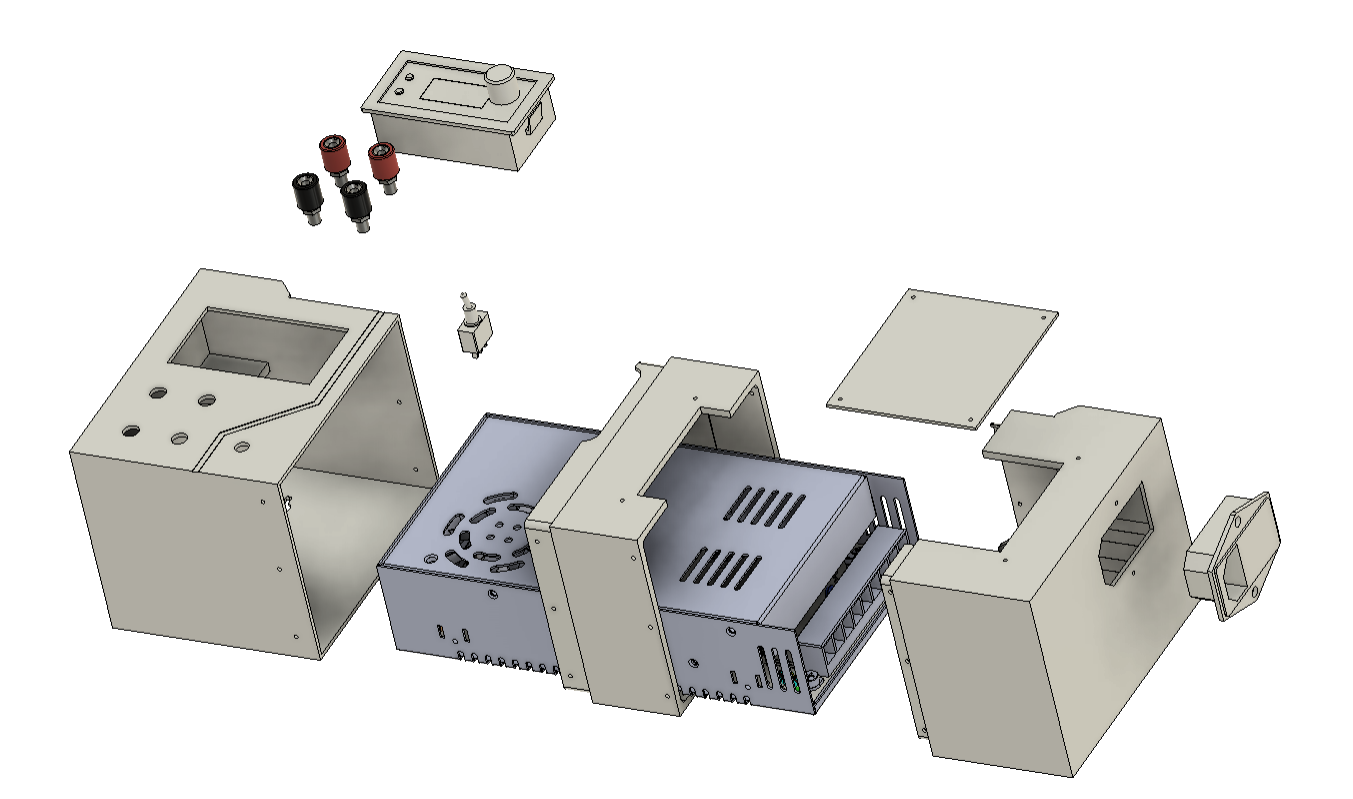
The bench power supply's main body consists of three main bodies, or sections, that are linked together.
Here, the male banana pins will be plugged into four female banana sockets on the output side, which house the ZK-4KX Buck converter module. A knob switch has been added to turn the ZK-4KX on or off.
The Power INLET Fuse socket is positioned in the Power In section.
Also, connected between the output side part and power in part, we have a middle section that connects both parts together.
A few mounting ribs are used inside the output section and power in section to hold the PSU in place after it is added into the setup.
In addition, a custom PCB has been added to the front face of the Middle and Power IN sections. On this PCB, LEDs will be placed to create an aesthetically pleasing light board that is modeled after a flux capacitor.
The models were created using Fusion360, and three different PLA colors—White, Grey, and Black—were used to 3D print them.
We use a 0.8mm nozzle with 20% infill and a 0.3mm layer height to 3D print them on our ENDER 3.
Flux Capacitor

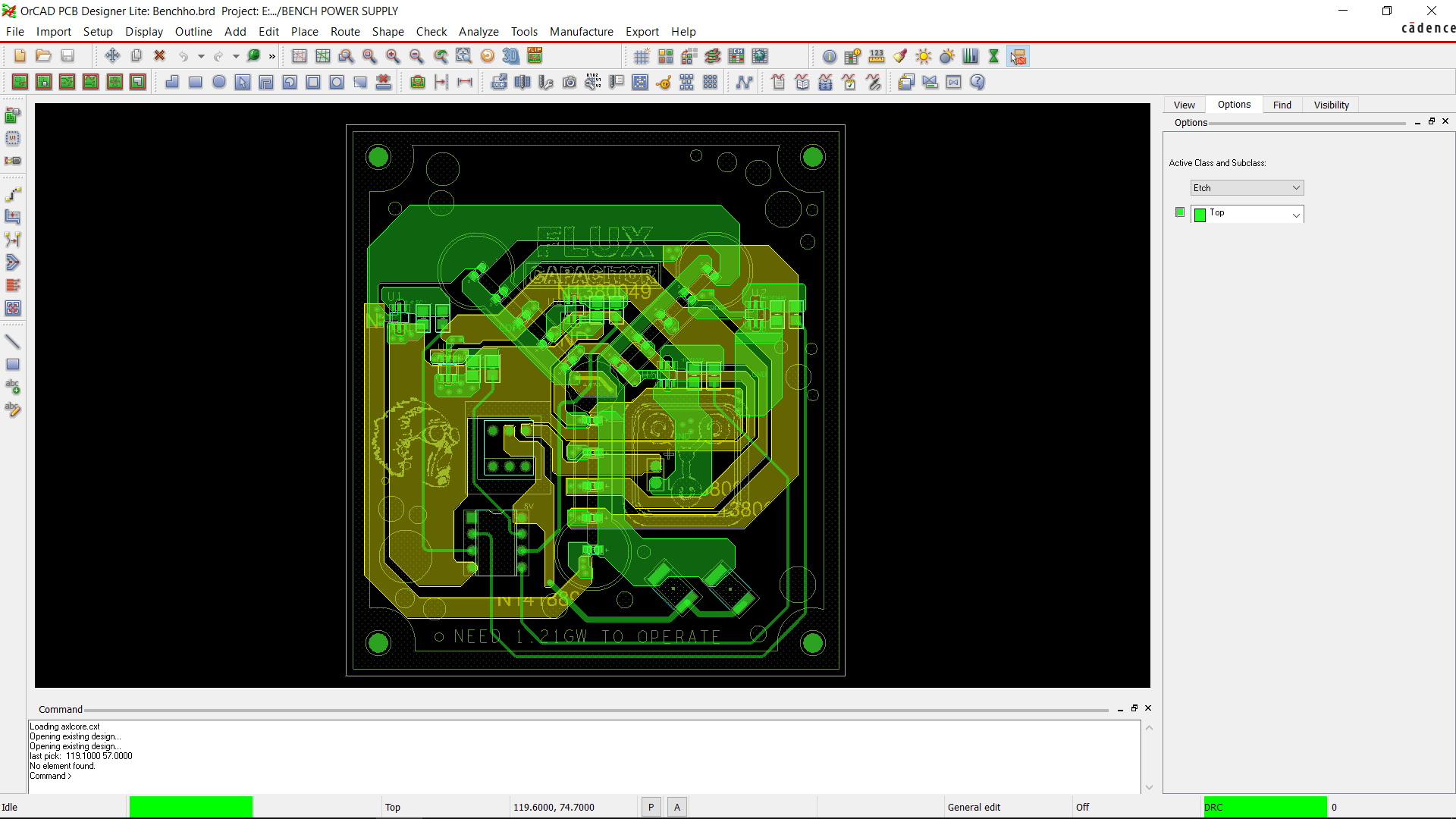
The Flux Capacitor Circuit was designed first with one major change from the original project I made a couple of years ago: we added five loads instead of the original four LED loads.
In order to power three parallel LEDs, we have added five N-channel Mosfets (8205S) in the present case. The I/O Pins of the Attiny85 are connected to the Gate of each mosfet through a resistor.
The device is turned on or off via a push switch that is connected to the VCC. To further limit the current flowing to the LEDs, we have included a load resistor in this case. A 1K resistor is being utilized in a package of 2512.
This circuit was actually from an old, similar project, which you can checkout here:
https://hackster.io/Arnov_Sharma_makes/flux-capacitor-pcb-badge-v3-acc045
As for the PCB outline, we use the layout made in the Cad file to make the board outline and position the mounting holes.
The PCB was then designed, and each component was placed on the board. LEDs were placed in a Y shape, resembling the flux capacitor.
PCBWAY
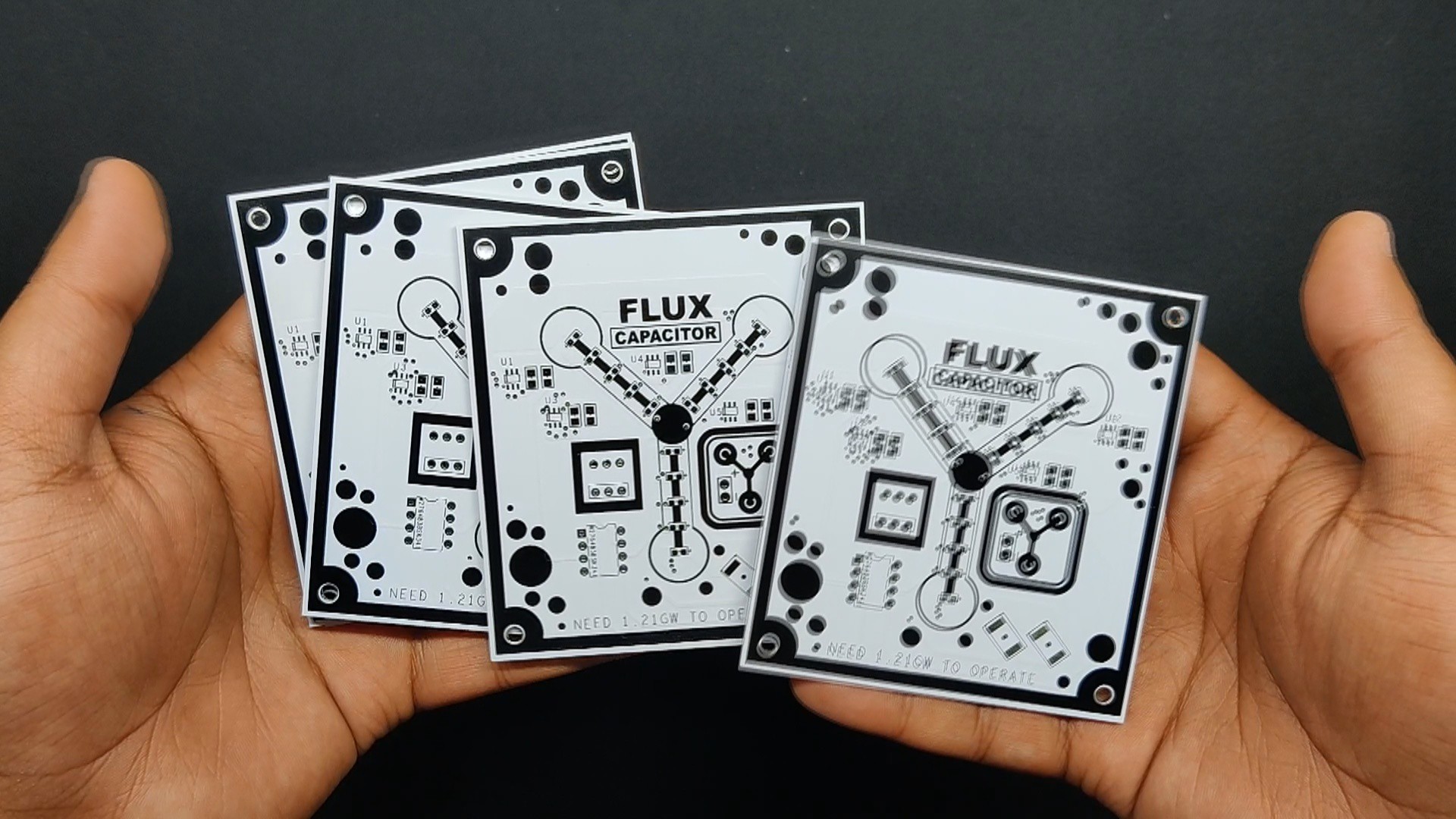
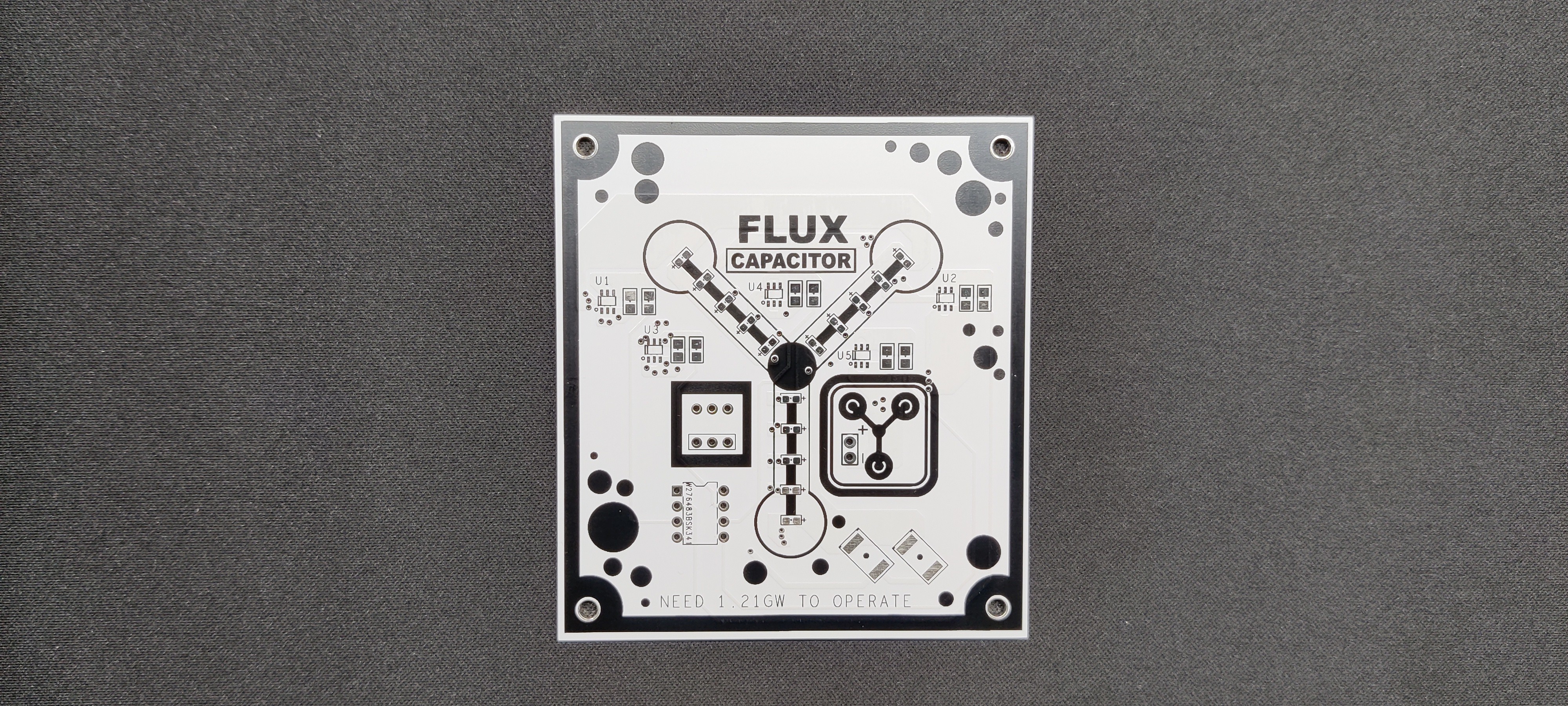
After completing the PCB design, we export the Gerber data and send it to PCBWAY for samples.
We placed an order for a white silkscreen LED board.
After placing the order, the PCBs were received within a week, and the PCB quality was pretty great.
They are presently celebrating their tenth anniversary in business by hosting a tour that includes a few activities in which you can take part and win some goodies, such as special coupons and the chance to open blind boxes filled with merchandise from their gift shop.
Over the past ten years, PCBWay has distinguished itself by providing outstanding PCB manufacturing and assembly services, becoming a trusted partner for countless engineers and designers worldwide.
Their commitment to quality and customer satisfaction has been unwavering, leading to significant growth and expansion.
You guys can check out PCBWAY If you want great PCB service at an affordable rate.
 Arnov Sharma
Arnov Sharma